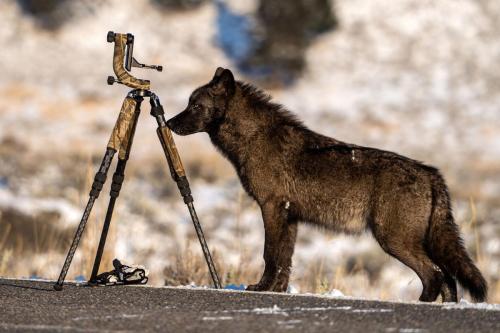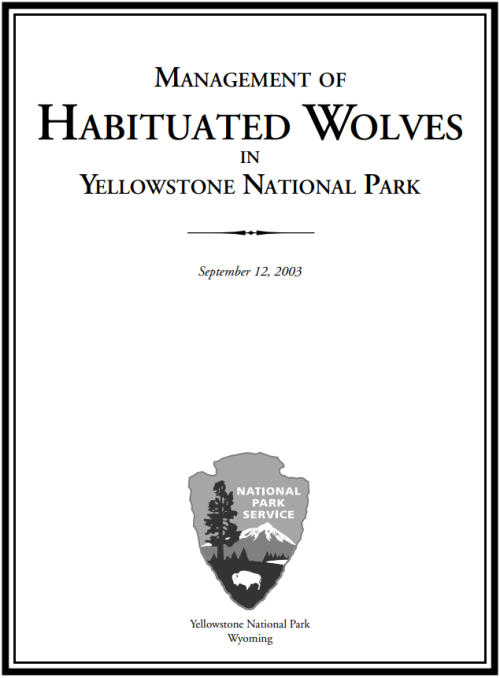#habituation
Picture by Jort Vanderveen
Yellowstone wolf 1273M sniffs a tripod. The wolf eventually walked away with the tripod in its mouth. Park rangers have started hazing habituated wolves to prevent such close encounters.
Post link
Wolves are among the shiest of all wildlife and are generally suspicious of humans. Historically, problem wolves are rare and have an almost zero probability of attacking a human. However, some wild wolves have shown aggressive behavior towards humans, and it is the purpose of this plan to acknowledge that possibility in Yellowstone National Park (YNP) and take steps to prevent such an occurrence. ¨
Wolves are intelligent animals that learn quickly, so changing the behavior of a problem wolf is difficult. Also, because problem wolf behavior is rare, there is little published information and management strategies on this topic, and the common solution is wolf removal. Unlike other aspects of wolf management, where a plethora of information exits, there was little information upon which to draw for formulation of this management plan.
Our management objectives discussed in this plan are to: 1) maintain a wild population of wolves in YNP; 2) prevent the development of habituated wolves; 3) reduce wolf–human contact; 4) prevent human injury due to an habituated wolf; 5) educate the public about proper wolf viewing so as to prevent habituation; and 6) gather more information on habituated wolves to help manage future situations that may develop. We intend to achieve these goals through human education and intolerance of fearless wolves that may pose a threat to human safety. Should cases of problem wolves occur, and non-lethal management actions are unsuccessful in eliminating the problem, then removal of the problem wolf will take place. We recommend, however, that wolf removal be considered on a case-by-case basis.
Our strategy is two pronged, involving management of both people and wolves. Since wolves have not been recorded to attack people on their first encounter with humans, and require exposure to humans before attacking, we will use a graded response. It should be noted, however, that YNP wolves have more exposure to people than is typical, hence sometimes more aggressive actions may be necessary. Our first response to a report of a habituated or unafraid wolf would be to warn and educate the public, increase our monitoring intensity, and visit the site where problems were reported. This would primarily be to gather more data, allowing formulation of future responses if necessary (see Appendix I). If the problem continues we would negatively condition the animal with cracker shells, bean bag rounds, or rubber bullets, all proven to be non-injurious deterrents. If hazing fails, then the final step would be wolf removal.
Almost all of the wolves that have shown aggression towards humans have lost their wildness by being repeatedly exposed to humans and losing their fear as a consequence (Linnell et al. 2002, McNay 2002a, Carnes and Van Ballenberghe personal communication). McNay (2002a) defines habituation as “the loss of an animal’s fear response to people arising from frequent non-consequential encounters.” Wolves in YNP are probably non-consequently exposed to people more than any other place in North America. Habituation appears to be a prerequisite for an aggressive act towards a human, and food rewards most commonly promote habituation, but there are cases of non-food-conditioned wolves attacking humans (McNay 2002b).
Post link


